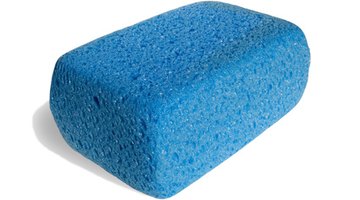How to Wet Sand Plaster
Easy-to-work-with, quick-setting and inexpensive, plaster provides a common way to patch walls and ceilings. For a smooth, professional finish on your plaster repair, consider wet sanding. Not only does wet sanding make less of a mess than dusty dry sanding, it's gentle and relatively non-abrasive.

Things You Will Need
- Bucket
- Water
- Sponge
- Stepladder (optional)
-
Fill a bucket with water. If you need a stepladder to reach the plaster, set it up before you begin sanding.
-
Wait for the plaster to harden. Ask the Builder recommends wet sanding when the plaster becomes "quite hard" but not fully set. The time plaster takes to harden will vary, so touch the plaster gently with a finger to see if it's hard but not set. The plaster should not feel tacky or wet.
-
Immerse your sponge in the water, then wring it out so it's damp, but not wet.
-
Touch the sponge to the plaster, rubbing with long, gentle strokes.
-
Re-wet the sponge to remove plaster grit. You'll need to do this frequently to ensure a smooth finish. Again wring out the sponge so it's damp, not soaked.
-
Bring the sponge back up to the plaster and keep stroking to get it smooth. Work in this manner until you've evened out the plaster's grade and the finish is quite smooth.
-
Dump the water down the drain. Throw out the sponge or save it for cleaning. Allow the plaster to set undisturbed.
The Drip Cap
- Easy-to-work-with, quick-setting and inexpensive, plaster provides a common way to patch walls and ceilings.
- Again wring out the sponge so it's damp, not soaked.
- Work in this manner until you've evened out the plaster's grade and the finish is quite smooth.
- Allow the plaster to set undisturbed.
References
Writer Bio
A successful website writer since 1998, Elton Dunn has demonstrated experience with technology, information retrieval, usability and user experience, social media, cloud computing, and small business needs. Dunn holds a degree from UCSF and formerly worked as professional chef. Dunn has ghostwritten thousands of blog posts, newsletter articles, website copy, press releases and product descriptions. He specializes in developing informational articles on topics including food, nutrition, fitness, health and pets.
Photo Credits
- sponge for cleaning image by Serghei Velusceac from Fotolia.com
- sponge for cleaning image by Serghei Velusceac from Fotolia.com
More Articles



